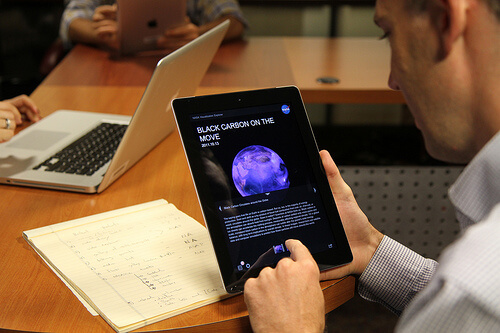Tablet shipments to K-12 schools grew 103% in the last year. Here are 5 ways tablets are changing schools: Personalized learning, creative interactivity, online learning, formative assessments, and tablets will introduce even even more change.
Tablet shipments to schools grew 103% in the last year according to research from International Data Corporation (IDC). The report states ”that momentum will continue as the 2013 back-to-school season approaches.” This growth in tablets will affect learning and classroom management—but how? Here are five ways tablets will begin to change K-12 education.
Change 1: Personalized learning
Tablets allow a class of 30 students to work on 30 different specific skills at the same time. The educational model in which a teacher stands in front of neat rows of students works when subjects are being introduced, but not so much when skills are being practiced. In the future, teachers will spend more time guiding and coaching students as they work on individual activities on their tablets.
Personalized learning is efficient learning. Interactive question-and-answer quizzes on individual tablets will lighten the teacher’s load of grading and assessing—freeing them up to use their time to work face-to-face with the kids who need their attention.
Change 2: Creative interactivity
Some types of learning are ideal for lecture-and-test models—an overview of a history lesson, for example. Many others, however, are best suited for exploration and creativity. Students need a balance of both. Tables can help teachers introduce more creative, exploratory learning into their classrooms.
Applications on tablets can include drawing boards and writing notebooks that allow children to interact creatively with what they’re learning. Tablets with cameras open up new possibilities for science projects. For example students can record and comment on the growth of a flower or the development of mold over time. Interactive Q&A forms and quizzes in tablets can enhance traditional textbook content. Tablets allow students to self-monitor their learning and interact with narratives.
See full story on digitalbookworld.com


